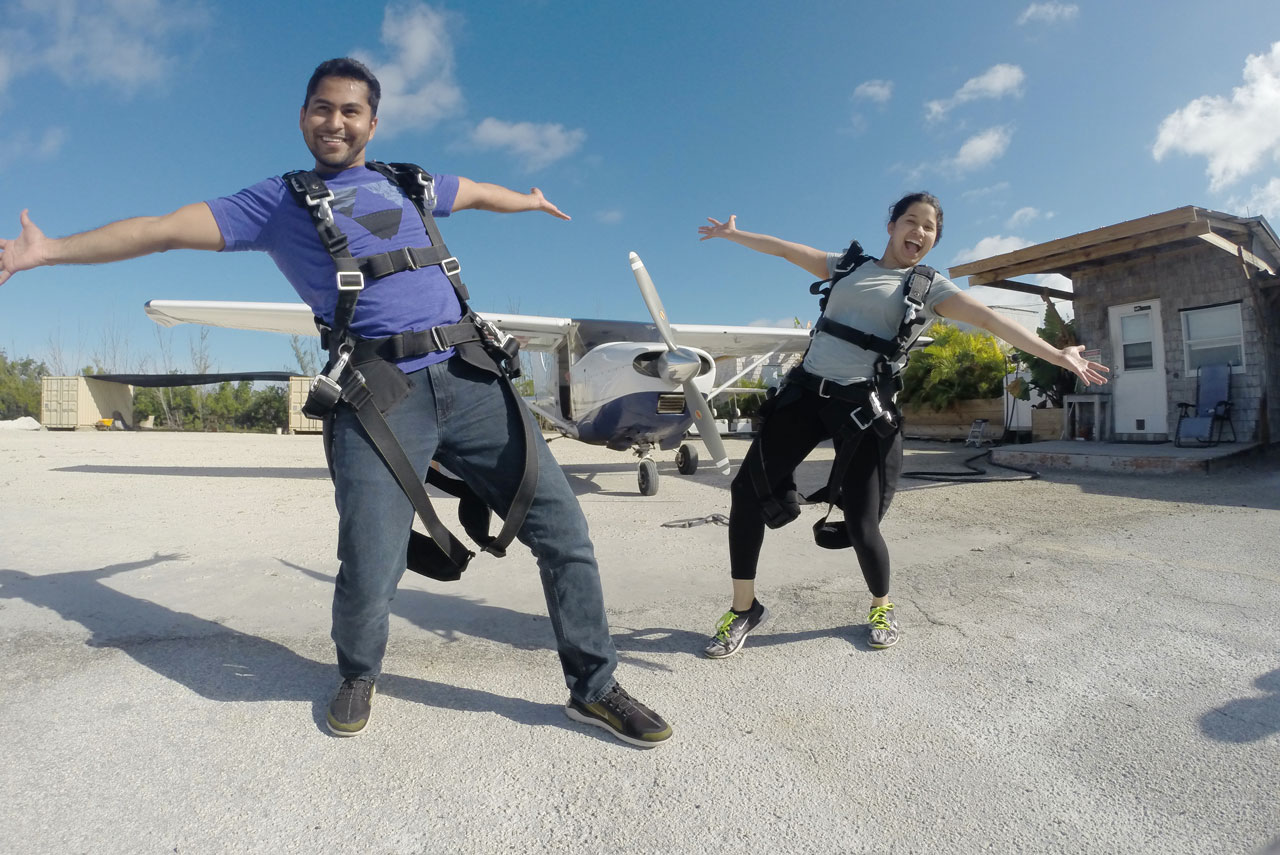Skydive Pilot Jobs: How To Begin Your Flying Journey
DZ News
Posted by: Skydive Key West
8 months ago
The thrill of freefall captures the hearts of many, but what about those who get skydivers up there? There’s another exciting adventure waiting for those who want to fly the aircraft that carries daring jumpers into the skies. Whether you’re an aviation enthusiast or just curious about the credentials skydiving pilots hold, this article will scratch the surface of the skydiving aviation sector and give you the basics of skydive pilot jobs.

How to be a Jump Pilot: Four Easy Steps
1. First things first: get your Private Pilot License (PPL).
A PPL certification allows you to fly small, single-engine airplanes for personal use. It means you have a basic understanding of flying, passed an examination and checkride, and have accrued a minimum of 40 flight hours, although the national average sits around 65. Think: Tom Cruise serenely soaring the skies at the end of Top Gun: Maverick.
2. Get your Instrument Rating (IR).
Having an IR allows you to fly in a variety of conditions solely by instruments, rather than visuals (sight). To be able to fly under Instrument Flight Rules (IFR), you have to undergo specific training, pass a written examination, and demonstrate proficiency in flying using only the instruments of the aircraft.
This certification proves a pilot’s ability to fly in challenging environments. How does this pertain to skydivers when they only jump in favorable weather? Fair question! Having this rating proves a pilot’s proficiency in knowing their aircraft and being able to expect the unexpected – it adds a layer of readiness, giving peace of mind to the pilot and jumpers onboard.
3. Gain your Commercial Single-Engine Land license (CSEL).
A commercial license means you’re able to start getting paid for flying – becoming a jump pilot is on the horizon! CSEL licenses require lots of flight hours – usually a minimum of 250 – across various areas, such as cross-country solos. Commercial rating candidates must have completed specific training hours and in-air evaluations, proving proficiency in flying a single-engine aircraft. You must also pass a written exam covering advanced aviation topics, regulations, and procedures.
*Note: This rating covers single-engine aircraft only – it’s just another required notch on the ladder of progression, and many dropzones fly turbine or multi-engine aircraft, which call for other ratings.
4. Stand out!
We hate to break it to ya, but there’s no shortage of 250-hour commercial pilots. Gaining experience flying high-performance (more than 200 horsepower engine) aircraft, and gaining hours and experience however you can will up your chances of becoming a skydive pilot. The entire skydiving community continues to thrive because we place safety at the forefront of everything we do, and this includes making sure our pilots have a solid flight foundation.
Dropzones tend to prioritize those with prior jump pilot experience and at least 500 total hours of flight time, although many require more (around 1,000 hours) for insurance purposes. How the heck can you get experience if you need the job to get the experience? Jump pilot courses! There are a few options across the country for schools that train pilots to fly jumpers. And, like with any job, being a morally sound individual, showing a tangible drive to progress, and portraying a genuine eagerness to be a part of the skydiving community will likely up your chances!

How Much Do Skydiving Pilots Make?
We literally couldn’t do it without our altitude chauffeurs, they must make a killing, right? Similar to most working in the skydiving industry, skydive pilots are generally paid per load flown. Meaning, tandem skydiving instructors and videographers are paid per jump they do, and jump pilots are the same.
How many hours do skydive pilots fly? Well, it depends on a few factors. Rather, how many loads do skydiving pilots fly in a day? It depends on a few factors! Is the weather awesome all day? What type of plane are they flying (how fast does it get to exit altitude)? What’s the demand (are there a lot of people wanting to skydive)?
Do Skydive Pilots Wear Parachutes?
Yep, skydiving pilots are required by the FAA to wear parachutes on jump planes. Why? The dang door is open! Remember how we put safety above everything? This includes being prepared for anything, even an unforeseen aircraft emergency. Skydiving, in every aspect, carries an inherent level of risk. The reason we’re able to continuously progress in the sport is that we mitigate this risk wherever possible, and that includes requiring pilots to don a bail-out rig.
Becoming a jump pilot offers a sought-after glimpse of the extraordinary, a supportive community, and a consistent opportunity for growth. Join the ranks of those who get to give the thrill of the jump by exploring training options, networking with experienced jump pilots, and immersing yourself in the skydiving community.
Want to see our awesome pilots in action? Come jump with us at Skydive Key West!!



